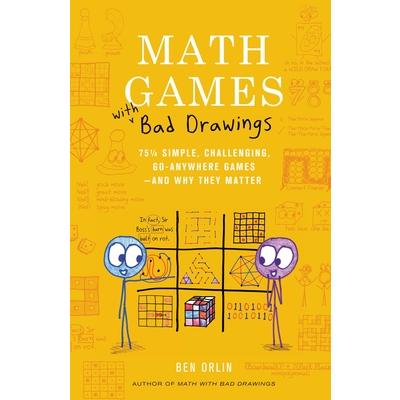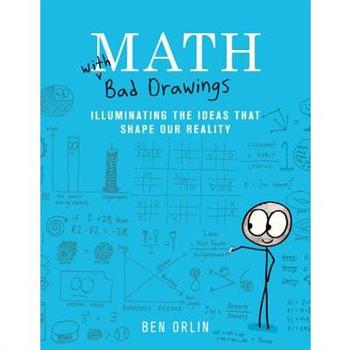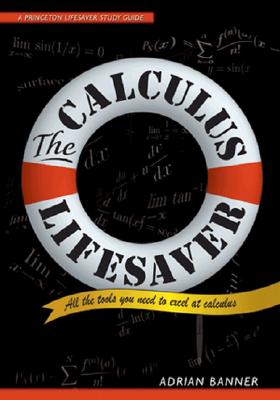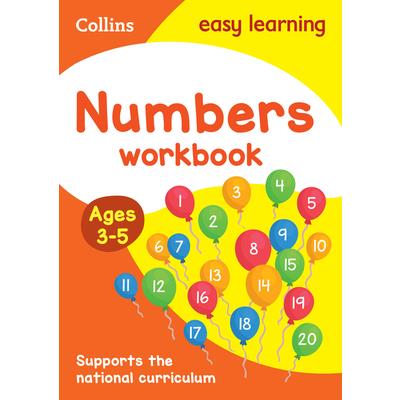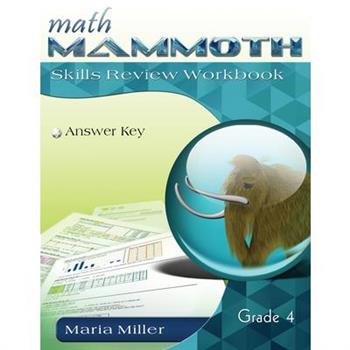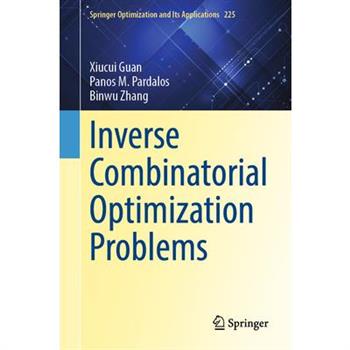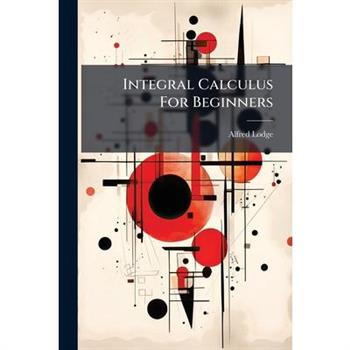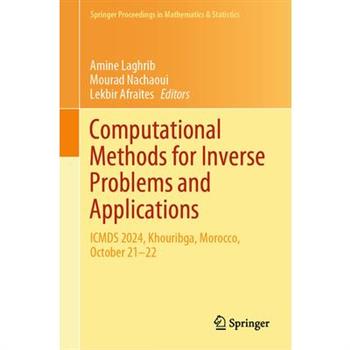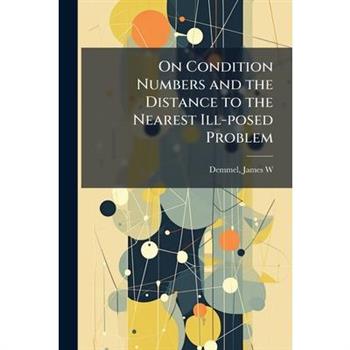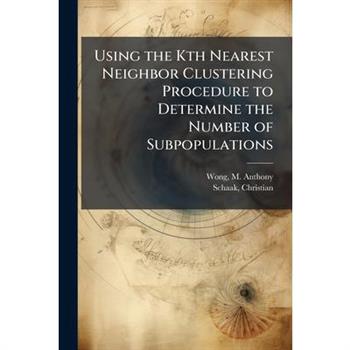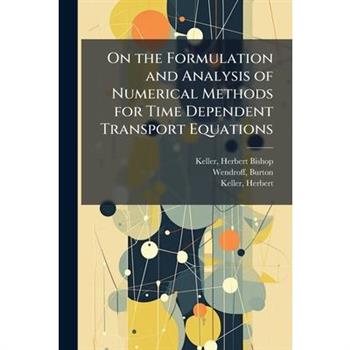New Perspectives on Optimization Algorithms Research
Optimization processes are present in nearly all human activities, aiming to reduce time and expenses, conserve resources, and maximize efficiency. Classical numerical optimization methods were initially employed in more complex or elaborate problems. This class of methods was convenient to use when equations could correctly and completely formulate all the attributes of the problem to be optimized and whose search space for the solution had convexity characteristics and was not multimodal. Expressing a problem completely through equations is often a difficult (if not impossible) task because linguistic values or employing quantities that are not easily dealt with by classical optimization methods can only describe certain limitations and barriers. Irregular and non-convex search spaces also present problems for classical methods, especially those with multiple local minima and maxima, as they can lead to suboptimal solutions. In this context, researchers in optimization have presented new techniques to overcome these barriers, introducing new concepts and methods that enable working with problems that are not well-defined and in multimodal search spaces. Many of these techniques utilize artificial intelligence methods, and it is possible to optimize problems where their limitations are not clearly defined or where their search spaces contain different local maxima and minima. This book is a contribution in this sense. In it, the reader will find two sections. The first, titled "Methodologies", presents the frontier of state-of-the-art optimization techniques and their applications to various problems. The second section, titled "Applications," presents examples of practical applications of modern techniques in optimizing issues, which can be easily adapted to others with similar characteristics. Thus, the reader can use this book to optimize their problems by applying the solutions presented in the chapters and adapting them to their specific issues.
The System of Calculating Diameter, Circumference, Area, and Squaring the Circle
"The System of Calculating Diameter, Circumference, Area, and Squaring the Circle" by James Morton, originally published in 1879, presents a historical perspective on geometrical methods for calculating key properties of circles. This work delves into the techniques used to determine a circle's diameter, circumference, and area, with a particular focus on the age-old problem of 'squaring the circle.' It offers insights into the mathematical understanding and approaches of the late 19th century, providing a valuable resource for those interested in the history of mathematics and geometrical problem-solving.This work has been selected by scholars as being culturally important, and is part of the knowledge base of civilization as we know it. This work was reproduced from the original artifact, and remains as true to the original work as possible. Therefore, you will see the original copyright references, library stamps (as most of these works have been housed in our most important libraries around the world), and other notations in the work.This work is in the public domain in the United States of America, and possibly other nations. Within the United States, you may freely copy and distribute this work, as no entity (individual or corporate) has a copyright on the body of the work.As a reproduction of a historical artifact, this work may contain missing or blurred pages, poor pictures, errant marks, etc. Scholars believe, and we concur, that this work is important enough to be preserved, reproduced, and made generally available to the public. We appreciate your support of the preservation process, and thank you for being an important part of keeping this knowledge alive and relevant.
Permutation Statistical Methods for Criminology and Criminal Justice
This book takes a unique approach to explaining permutation statistical methods for advanced undergraduate students, graduate students, faculty, researchers, and other professionals interested in the areas of criminology or criminal justice. The book integrates permutation statistical methods with a wide range of classical statistical methods. It opens with a comparison of two models of statistical inference: the classical population model espoused by J. Neyman and E. Pearson and the permutation model first introduced by R.A. Fisher and E.J.G. Pitman. Numerous comparisons of permutation and classical statistical methods are illustrated with examples from criminology and criminal justice and supplemented with a variety of R scripts for ease of computation. The text follows the general outline of an introductory textbook in statistics with chapters on central tendency, variability, one-sample tests, two-sample tests, matched-pairs tests, completely-randomized analysis of variance, randomized-blocks analysis of variance, simple linear regression and correlation, and the analysis of goodness of fit and contingency. Unlike classical statistical methods, permutation statistical methods do not rely on theoretical distributions, avoid the usual assumptions of normality and homogeneity, depend solely on the observed data, and do not require random sampling, making permutation statistical methods ideal for analyzing criminology and criminal justice databases. Permutation methods are relatively new in that it took modern computing power to make them available to those working in criminology and criminal justice research. The book contains detailed examples of permutation analyses. Each analysis is paired with a conventional analysis; for example, a permutation test of the difference between experimental and control groups is contrasted with Student's two-sample $t$ test. An added feature is the inclusion of multiple historical notes on the origin and development of both parametric and conventional tests and measures. Designed for an audience with a basic statistical background and a strong interest in parametric and non-parametric statistics, the book can easily serve as a textbook for undergraduate and graduate students in criminology, criminal justice, or sociology, as well as serving as a research source for faculty, researchers, and other professionals in the area of criminology. No statistical training beyond a first course in statistics is required, but some knowledge of, or interest in, criminology or criminal justice is assumed.
The Doctrine Of Chances, Or, The Theory Of Gaming, Made Easy
The Doctrine of Chances, or, The Theory of Gaming, Made Easy, explores the mathematical principles underlying games of chance and gambling. Written by William Rouse, this treatise provides a detailed examination of probability as it applies to various games, offering insights into the odds and strategies involved. The book delves into the calculations necessary for understanding and predicting outcomes in gaming scenarios, making it accessible to both mathematicians and enthusiasts interested in the theory behind games of chance. Rouse's work is a valuable resource for anyone seeking to understand the mathematical foundations of gambling and probability, offering a historical perspective on the development of these concepts. This edition preserves the original text, providing readers with an authentic view of early mathematical approaches to gaming.This work has been selected by scholars as being culturally important, and is part of the knowledge base of civilization as we know it. This work was reproduced from the original artifact, and remains as true to the original work as possible. Therefore, you will see the original copyright references, library stamps (as most of these works have been housed in our most important libraries around the world), and other notations in the work.This work is in the public domain in the United States of America, and possibly other nations. Within the United States, you may freely copy and distribute this work, as no entity (individual or corporate) has a copyright on the body of the work.As a reproduction of a historical artifact, this work may contain missing or blurred pages, poor pictures, errant marks, etc. Scholars believe, and we concur, that this work is important enough to be preserved, reproduced, and made generally available to the public. We appreciate your support of the preservation process, and thank you for being an important part of keeping this knowledge alive and relevant.
On Twisted Quintic Curves
"On Twisted Quintic Curves" delves into the intricate world of algebraic geometry, focusing specifically on the properties and characteristics of twisted quintic curves. This work by Elmer Clifford Colpitts explores the mathematical structures underlying these complex curves, offering insights into their geometric and algebraic nature. Suitable for advanced students and researchers in mathematics, this book provides a rigorous examination of the subject matter. It contributes to a deeper understanding of quintic curves and their significance within the broader field of algebraic geometry.This work has been selected by scholars as being culturally important, and is part of the knowledge base of civilization as we know it. This work was reproduced from the original artifact, and remains as true to the original work as possible. Therefore, you will see the original copyright references, library stamps (as most of these works have been housed in our most important libraries around the world), and other notations in the work.This work is in the public domain in the United States of America, and possibly other nations. Within the United States, you may freely copy and distribute this work, as no entity (individual or corporate) has a copyright on the body of the work.As a reproduction of a historical artifact, this work may contain missing or blurred pages, poor pictures, errant marks, etc. Scholars believe, and we concur, that this work is important enough to be preserved, reproduced, and made generally available to the public. We appreciate your support of the preservation process, and thank you for being an important part of keeping this knowledge alive and relevant.
Industrial Mathematics Practically Applied
"Industrial Mathematics Practically Applied" by Paul V. Farnsworth is a comprehensive guide designed for students in manual training, industrial, and technical schools, as well as for home study. This book offers practical instruction and serves as a valuable reference for understanding the application of mathematics in industrial settings. The book covers a range of topics relevant to various trades and industries, providing clear explanations and examples to aid comprehension. Farnsworth's work emphasizes the importance of mathematical principles in real-world scenarios, making it an essential resource for anyone looking to enhance their skills in industrial mathematics. Originally published in the early 20th century, this book remains a valuable resource for those seeking a practical understanding of mathematics in industrial applications.This work has been selected by scholars as being culturally important, and is part of the knowledge base of civilization as we know it. This work was reproduced from the original artifact, and remains as true to the original work as possible. Therefore, you will see the original copyright references, library stamps (as most of these works have been housed in our most important libraries around the world), and other notations in the work.This work is in the public domain in the United States of America, and possibly other nations. Within the United States, you may freely copy and distribute this work, as no entity (individual or corporate) has a copyright on the body of the work.As a reproduction of a historical artifact, this work may contain missing or blurred pages, poor pictures, errant marks, etc. Scholars believe, and we concur, that this work is important enough to be preserved, reproduced, and made generally available to the public. We appreciate your support of the preservation process, and thank you for being an important part of keeping this knowledge alive and relevant.
Integral Calculus For Beginners
"Integral Calculus For Beginners" is a comprehensive introduction to integral calculus, designed for students and learners with little to no prior knowledge of the subject. Authored by Alfred Lodge, this book presents the fundamental concepts and techniques of integration in a clear and accessible manner. Starting with basic definitions and progressing through various integration methods, the book provides numerous examples and exercises to reinforce understanding. This book aims to build a solid foundation in integral calculus, enabling readers to tackle more advanced topics and applications. Suitable for self-study or classroom use, this book is an invaluable resource for anyone seeking to master integral calculus.This work has been selected by scholars as being culturally important, and is part of the knowledge base of civilization as we know it. This work was reproduced from the original artifact, and remains as true to the original work as possible. Therefore, you will see the original copyright references, library stamps (as most of these works have been housed in our most important libraries around the world), and other notations in the work.This work is in the public domain in the United States of America, and possibly other nations. Within the United States, you may freely copy and distribute this work, as no entity (individual or corporate) has a copyright on the body of the work.As a reproduction of a historical artifact, this work may contain missing or blurred pages, poor pictures, errant marks, etc. Scholars believe, and we concur, that this work is important enough to be preserved, reproduced, and made generally available to the public. We appreciate your support of the preservation process, and thank you for being an important part of keeping this knowledge alive and relevant.
Computational Methods for Inverse Problems and Applications
Longmans' School Trigonometry
This is a comprehensive textbook on trigonometry, intended for school use. "Longmans' School Trigonometry" covers the fundamental principles and applications of trigonometry, providing a solid foundation for students. It includes detailed explanations, numerous examples, and exercises designed to enhance understanding and skill development. This book is an invaluable resource for students learning trigonometry and for teachers seeking a reliable and thorough instructional tool.This work has been selected by scholars as being culturally important, and is part of the knowledge base of civilization as we know it. This work was reproduced from the original artifact, and remains as true to the original work as possible. Therefore, you will see the original copyright references, library stamps (as most of these works have been housed in our most important libraries around the world), and other notations in the work.This work is in the public domain in the United States of America, and possibly other nations. Within the United States, you may freely copy and distribute this work, as no entity (individual or corporate) has a copyright on the body of the work.As a reproduction of a historical artifact, this work may contain missing or blurred pages, poor pictures, errant marks, etc. Scholars believe, and we concur, that this work is important enough to be preserved, reproduced, and made generally available to the public. We appreciate your support of the preservation process, and thank you for being an important part of keeping this knowledge alive and relevant.
Me?Ÿerkl瓣rung
Me?Ÿerkl瓣rung, authored by Joseph Hahn, delves into the intricacies of measurement theory. This work provides a comprehensive explanation of mathematical principles underlying accurate measurement in various scientific and technical fields. It aims to clarify complex concepts, offering readers a deeper understanding of precision and its applications.The book is structured to serve as a valuable resource for students, researchers, and professionals seeking to enhance their knowledge of measurement techniques and theoretical frameworks. "Me?Ÿerkl瓣rung" explores the mathematical foundations essential for ensuring reliability and validity in measurement processes. Joseph Hahn's expertise offers a detailed exploration suitable for anyone seeking a rigorous understanding of this vital subject.This work has been selected by scholars as being culturally important, and is part of the knowledge base of civilization as we know it. This work was reproduced from the original artifact, and remains as true to the original work as possible. Therefore, you will see the original copyright references, library stamps (as most of these works have been housed in our most important libraries around the world), and other notations in the work.This work is in the public domain in the United States of America, and possibly other nations. Within the United States, you may freely copy and distribute this work, as no entity (individual or corporate) has a copyright on the body of the work.As a reproduction of a historical artifact, this work may contain missing or blurred pages, poor pictures, errant marks, etc. Scholars believe, and we concur, that this work is important enough to be preserved, reproduced, and made generally available to the public. We appreciate your support of the preservation process, and thank you for being an important part of keeping this knowledge alive and relevant.
On the Principle of Limiting Absorptions;
On the Principle of Limiting Absorptions explores advanced topics in mathematical physics and functional analysis. Originally written in Russian and translated by Clyde D. Hill, this work by D.M. Eidus delves into the principle of limiting absorption, a crucial concept in the study of differential operators and spectral theory. This book is an essential resource for researchers and students in mathematics and physics, offering insights into the behavior of solutions to differential equations and their applications in various physical phenomena.This work has been selected by scholars as being culturally important, and is part of the knowledge base of civilization as we know it. This work was reproduced from the original artifact, and remains as true to the original work as possible. Therefore, you will see the original copyright references, library stamps (as most of these works have been housed in our most important libraries around the world), and other notations in the work.This work is in the public domain in the United States of America, and possibly other nations. Within the United States, you may freely copy and distribute this work, as no entity (individual or corporate) has a copyright on the body of the work.As a reproduction of a historical artifact, this work may contain missing or blurred pages, poor pictures, errant marks, etc. Scholars believe, and we concur, that this work is important enough to be preserved, reproduced, and made generally available to the public. We appreciate your support of the preservation process, and thank you for being an important part of keeping this knowledge alive and relevant.
Some Integral Equations Related to Abel's Equation and the Hilbert Transform
"Some Integral Equations Related to Abel's Equation and the Hilbert Transform" explores advanced mathematical concepts central to the field of integral equations. Authored by Arthur S. Peters, this work delves into the intricate relationships between Abel's equation, the Hilbert transform, and various integral equations. The book offers a rigorous treatment of these topics, providing detailed analysis and methodologies for solving complex problems. It is an invaluable resource for mathematicians, physicists, and engineers seeking a deeper understanding of these mathematical tools and their applications. This enduring work continues to be relevant for researchers and students engaged in mathematical analysis and applied mathematics.This work has been selected by scholars as being culturally important, and is part of the knowledge base of civilization as we know it. This work was reproduced from the original artifact, and remains as true to the original work as possible. Therefore, you will see the original copyright references, library stamps (as most of these works have been housed in our most important libraries around the world), and other notations in the work.This work is in the public domain in the United States of America, and possibly other nations. Within the United States, you may freely copy and distribute this work, as no entity (individual or corporate) has a copyright on the body of the work.As a reproduction of a historical artifact, this work may contain missing or blurred pages, poor pictures, errant marks, etc. Scholars believe, and we concur, that this work is important enough to be preserved, reproduced, and made generally available to the public. We appreciate your support of the preservation process, and thank you for being an important part of keeping this knowledge alive and relevant.
Elementary Algebra. To Which Is Now Added An Appendix
"Elementary Algebra. To Which Is Now Added An Appendix" by James Hamblin Smith is a comprehensive algebra textbook designed for students seeking a solid foundation in algebraic principles. This edition includes an appendix, enhancing its value as a learning resource. The book provides a clear and methodical approach to understanding algebraic concepts, making it suitable for both classroom use and self-study. Its detailed explanations and numerous examples help to reinforce learning and build confidence in problem-solving. This textbook remains a valuable resource for anyone studying elementary algebra.This work has been selected by scholars as being culturally important, and is part of the knowledge base of civilization as we know it. This work was reproduced from the original artifact, and remains as true to the original work as possible. Therefore, you will see the original copyright references, library stamps (as most of these works have been housed in our most important libraries around the world), and other notations in the work.This work is in the public domain in the United States of America, and possibly other nations. Within the United States, you may freely copy and distribute this work, as no entity (individual or corporate) has a copyright on the body of the work.As a reproduction of a historical artifact, this work may contain missing or blurred pages, poor pictures, errant marks, etc. Scholars believe, and we concur, that this work is important enough to be preserved, reproduced, and made generally available to the public. We appreciate your support of the preservation process, and thank you for being an important part of keeping this knowledge alive and relevant.
An Elementary Treatise On Algebra, Theoretical And Practical
"An Elementary Treatise On Algebra, Theoretical And Practical" by John Radford Young is a comprehensive guide designed to simplify the study of algebra for students. This book provides a thorough exploration of algebraic principles, combining theoretical knowledge with practical applications. Intended for classroom use, the treatise includes explanations and methods to clarify challenging concepts. Young's approach aims to make algebra accessible, enabling students to build a solid foundation in the subject. This work remains valuable for those seeking a clear and methodical introduction to algebra.This work has been selected by scholars as being culturally important, and is part of the knowledge base of civilization as we know it. This work was reproduced from the original artifact, and remains as true to the original work as possible. Therefore, you will see the original copyright references, library stamps (as most of these works have been housed in our most important libraries around the world), and other notations in the work.This work is in the public domain in the United States of America, and possibly other nations. Within the United States, you may freely copy and distribute this work, as no entity (individual or corporate) has a copyright on the body of the work.As a reproduction of a historical artifact, this work may contain missing or blurred pages, poor pictures, errant marks, etc. Scholars believe, and we concur, that this work is important enough to be preserved, reproduced, and made generally available to the public. We appreciate your support of the preservation process, and thank you for being an important part of keeping this knowledge alive and relevant.
Intermediate Mathematics
"Intermediate Mathematics: A Guide To The Mathematics Of The Intermediate Examinations In Arts And Science Of The University Of London" is a comprehensive resource designed to prepare students for intermediate-level mathematics examinations. Authored by William Briggs, this book aims to provide clear explanations and thorough coverage of the essential topics. Originally published as part of the 5th thousand print run, this edition continues to serve as a valuable study aid for students pursuing degrees in arts and science at the University of London. The text covers a range of mathematical concepts necessary for success in these examinations, offering detailed guidance and practice examples to enhance understanding and proficiency. This book remains relevant for those seeking a solid foundation in intermediate mathematics.This work has been selected by scholars as being culturally important, and is part of the knowledge base of civilization as we know it. This work was reproduced from the original artifact, and remains as true to the original work as possible. Therefore, you will see the original copyright references, library stamps (as most of these works have been housed in our most important libraries around the world), and other notations in the work.This work is in the public domain in the United States of America, and possibly other nations. Within the United States, you may freely copy and distribute this work, as no entity (individual or corporate) has a copyright on the body of the work.As a reproduction of a historical artifact, this work may contain missing or blurred pages, poor pictures, errant marks, etc. Scholars believe, and we concur, that this work is important enough to be preserved, reproduced, and made generally available to the public. We appreciate your support of the preservation process, and thank you for being an important part of keeping this knowledge alive and relevant.
Advances in Poisson Geometry
This book presents recent advances in topics related to Poisson geometry originating from lectures given at the "Poisson School" held in 2022 at the CRM in Barcelona. The purpose is to give both an introduction to this active field of research as well as highlight new trends in related topics. The texts cover both classical results, known to experts in the field, as well as recent and previously unpublished mathematical results. Graduate students and early-stage researchers with basic knowledge in differential and symplectic geometry, together with established researchers that are keen to dive into this rapidly growing field of research, will find this book a useful resource.
Science Of Arithmetic. In Three Parts. Part I. Primary Arithmetic, Being An Explanation Of The Decimal System Of Expressing Numbers, And The Elementary Processes Of Numerical Calculation
"Science Of Arithmetic. In Three Parts. Part I. Primary Arithmetic" is a historical text offering an explanation of the decimal system and elementary numerical calculation. Originally published in 1849, this book provides insight into 19th-century mathematical education. The text emphasizes foundational concepts, making it useful for understanding the historical development of arithmetic teaching methods. This edition is a valuable resource for educators, historians of mathematics, and anyone interested in the evolution of primary education.This work has been selected by scholars as being culturally important, and is part of the knowledge base of civilization as we know it. This work was reproduced from the original artifact, and remains as true to the original work as possible. Therefore, you will see the original copyright references, library stamps (as most of these works have been housed in our most important libraries around the world), and other notations in the work.This work is in the public domain in the United States of America, and possibly other nations. Within the United States, you may freely copy and distribute this work, as no entity (individual or corporate) has a copyright on the body of the work.As a reproduction of a historical artifact, this work may contain missing or blurred pages, poor pictures, errant marks, etc. Scholars believe, and we concur, that this work is important enough to be preserved, reproduced, and made generally available to the public. We appreciate your support of the preservation process, and thank you for being an important part of keeping this knowledge alive and relevant.
Tracts on Mathematical and Philosophical Subjects, Comprising Among Numerous Important Articles, The Theory of Bridges, With Several Plans of Recent Improvement; Also The Results of Numerous Experimen
This collection, "Tracts on Mathematical and Philosophical Subjects," by Charles Hutton, presents a comprehensive exploration of various scientific and engineering topics. Originally published in 1812, it offers insights into the state of mathematical and philosophical knowledge during that period. Among its numerous important articles, the book notably features 'The Theory of Bridges, ' detailing plans for recent improvements in bridge design and construction. Hutton also includes the results of numerous experiments on the force of gunpowder, offering applications to artillery and military science. This work provides a valuable resource for historians of science and engineering, as well as anyone interested in the evolution of mathematical and philosophical thought.This work has been selected by scholars as being culturally important, and is part of the knowledge base of civilization as we know it. This work was reproduced from the original artifact, and remains as true to the original work as possible. Therefore, you will see the original copyright references, library stamps (as most of these works have been housed in our most important libraries around the world), and other notations in the work.This work is in the public domain in the United States of America, and possibly other nations. Within the United States, you may freely copy and distribute this work, as no entity (individual or corporate) has a copyright on the body of the work.As a reproduction of a historical artifact, this work may contain missing or blurred pages, poor pictures, errant marks, etc. Scholars believe, and we concur, that this work is important enough to be preserved, reproduced, and made generally available to the public. We appreciate your support of the preservation process, and thank you for being an important part of keeping this knowledge alive and relevant.
The Collected Mathematical Papers of James Joseph Sylvester
This is the fourth volume of "The Collected Mathematical Papers of James Joseph Sylvester," documenting the prolific output of the renowned 19th-century mathematician. James Joseph Sylvester (1814-1897) made significant contributions to algebra, number theory, geometry, and invariant theory. This collection, meticulously compiled and edited, offers a comprehensive view of his work, showcasing his innovative approaches and profound insights.Edited by H. F. Baker, this volume makes Sylvester's groundbreaking research accessible to modern mathematicians, historians of science, and anyone with an interest in the development of mathematical thought. Sylvester's papers are valuable not only for their mathematical content but also for their historical context, providing a glimpse into the mathematical landscape of the 19th century. This collection is an essential resource for understanding the evolution of modern mathematics and the enduring legacy of one of its most influential figures.This work has been selected by scholars as being culturally important, and is part of the knowledge base of civilization as we know it. This work was reproduced from the original artifact, and remains as true to the original work as possible. Therefore, you will see the original copyright references, library stamps (as most of these works have been housed in our most important libraries around the world), and other notations in the work.This work is in the public domain in the United States of America, and possibly other nations. Within the United States, you may freely copy and distribute this work, as no entity (individual or corporate) has a copyright on the body of the work.As a reproduction of a historical artifact, this work may contain missing or blurred pages, poor pictures, errant marks, etc. Scholars believe, and we concur, that this work is important enough to be preserved, reproduced, and made generally available to the public. We appreciate your support of the preservation process, and thank you for being an important part of keeping this knowledge alive and relevant.
American Journal of Mathematics
The "American Journal of Mathematics", founded in 1878 by J.J. Sylvester at Johns Hopkins University, is the oldest continuously published mathematical journal in the Western Hemisphere. This inaugural volume represents a landmark in the development of mathematical research and scholarship in the United States. Featuring articles by leading mathematicians of the era, it covers a wide range of topics, reflecting the state of mathematical knowledge in the late 19th century. This historical volume offers insights into the evolution of mathematical thought and the establishment of mathematics as a prominent field of study in America. It is an invaluable resource for historians of science, mathematicians, and anyone interested in the intellectual history of the United States.This work has been selected by scholars as being culturally important, and is part of the knowledge base of civilization as we know it. This work was reproduced from the original artifact, and remains as true to the original work as possible. Therefore, you will see the original copyright references, library stamps (as most of these works have been housed in our most important libraries around the world), and other notations in the work.This work is in the public domain in the United States of America, and possibly other nations. Within the United States, you may freely copy and distribute this work, as no entity (individual or corporate) has a copyright on the body of the work.As a reproduction of a historical artifact, this work may contain missing or blurred pages, poor pictures, errant marks, etc. Scholars believe, and we concur, that this work is important enough to be preserved, reproduced, and made generally available to the public. We appreciate your support of the preservation process, and thank you for being an important part of keeping this knowledge alive and relevant.
Green's Function Techniques for the Solution of Time-dependant Potential Flows With a Free Surface in a Bounded Domain
This work presents Green's function techniques for solving time-dependent potential flows with a free surface in a bounded domain. It provides a detailed mathematical treatment applicable to advanced studies in fluid dynamics and engineering. The methodology allows for a rigorous analysis of complex fluid behaviors, offering insights into problems involving free surfaces and time-varying conditions.Researchers and engineers in fields such as naval architecture, hydraulic engineering, and computational fluid dynamics will find this study valuable. Its emphasis on theoretical foundations and practical applications ensures its continued relevance in addressing contemporary challenges in fluid mechanics.This work has been selected by scholars as being culturally important, and is part of the knowledge base of civilization as we know it. This work was reproduced from the original artifact, and remains as true to the original work as possible. Therefore, you will see the original copyright references, library stamps (as most of these works have been housed in our most important libraries around the world), and other notations in the work.This work is in the public domain in the United States of America, and possibly other nations. Within the United States, you may freely copy and distribute this work, as no entity (individual or corporate) has a copyright on the body of the work.As a reproduction of a historical artifact, this work may contain missing or blurred pages, poor pictures, errant marks, etc. Scholars believe, and we concur, that this work is important enough to be preserved, reproduced, and made generally available to the public. We appreciate your support of the preservation process, and thank you for being an important part of keeping this knowledge alive and relevant.
Ade
The ADE diagrams, shown on the cover, constitute one of the most universal and mysterious patterns in all of mathematics. John McKay's remarkable insights unveiled a connection between the 'double covers' of the groups of regular polyhedra, known since ancient Greek times, and the exceptional Lie algebras, recognised since the late nineteenth century. The correspondence involves the ADE diagrams being interpreted in different ways: as quivers associated with the groups and as Dynkin diagrams of root systems of Lie algebras. The ADE diagrams arise in many areas of mathematics, including topics in algebraic geometry, string theory, spectral theory of graphs and cluster algebras. Accessible to students, this book explains these connections with exercises and examples throughout. An excellent introduction for students and researchers wishing to learn more about this unifying principle of mathematics, it also presents standard undergraduate material from a novel perspective.
On Condition Numbers and the Distance to the Nearest Ill-posed Problem
This work explores the relationship between condition numbers and the distance to the nearest ill-posed problem. It provides a rigorous mathematical analysis of condition numbers, particularly in the context of numerical stability and error analysis. The study focuses on understanding how sensitive a problem is to small changes in its input data and investigates the proximity to problems for which solutions are undefined or highly unstable. Intended for researchers and graduate students in mathematics, computer science, and engineering, "On Condition Numbers and the Distance to the Nearest Ill-posed Problem" offers valuable insights into the theoretical foundations of numerical computation and its practical implications. The concepts discussed are crucial for designing robust numerical algorithms and assessing the reliability of computational results.This work has been selected by scholars as being culturally important, and is part of the knowledge base of civilization as we know it. This work was reproduced from the original artifact, and remains as true to the original work as possible. Therefore, you will see the original copyright references, library stamps (as most of these works have been housed in our most important libraries around the world), and other notations in the work.This work is in the public domain in the United States of America, and possibly other nations. Within the United States, you may freely copy and distribute this work, as no entity (individual or corporate) has a copyright on the body of the work.As a reproduction of a historical artifact, this work may contain missing or blurred pages, poor pictures, errant marks, etc. Scholars believe, and we concur, that this work is important enough to be preserved, reproduced, and made generally available to the public. We appreciate your support of the preservation process, and thank you for being an important part of keeping this knowledge alive and relevant.
Using the Kth Nearest Neighbor Clustering Procedure to Determine the Number of Subpopulations
This work explores the application of the Kth Nearest Neighbor clustering procedure as a method for determining the number of subpopulations within a dataset. Authored by M. Anthony Wong and Christian Schaak, this study delves into the statistical and computational aspects of using nearest neighbor techniques to identify and delineate distinct groups within complex data. The research provides insights into the practical use of this clustering approach, offering a valuable tool for researchers and practitioners in fields requiring robust data segmentation and analysis. The methods and findings presented can aid in a more accurate understanding of population structures and facilitate informed decision-making based on data-driven insights.This work has been selected by scholars as being culturally important, and is part of the knowledge base of civilization as we know it. This work was reproduced from the original artifact, and remains as true to the original work as possible. Therefore, you will see the original copyright references, library stamps (as most of these works have been housed in our most important libraries around the world), and other notations in the work.This work is in the public domain in the United States of America, and possibly other nations. Within the United States, you may freely copy and distribute this work, as no entity (individual or corporate) has a copyright on the body of the work.As a reproduction of a historical artifact, this work may contain missing or blurred pages, poor pictures, errant marks, etc. Scholars believe, and we concur, that this work is important enough to be preserved, reproduced, and made generally available to the public. We appreciate your support of the preservation process, and thank you for being an important part of keeping this knowledge alive and relevant.
Data Analysis of Medical Studies
This book is written for the many health professionals who are regularly frustrated by elegant but ambiguous descriptions of results of data analysis. It uses articles of the New England Journal of Medicine to demonstrate how ambiguous descriptions of results of data analysis may be read, so that it is clear what they do and do not reveal. These demonstrations also show how statistics is misused.
Lectures on Differential Geometry with Maple
This text is designed to update the Differential Geometry course by making it more relevant to today's students. It is intended for mathematics students, applied scientists, and engineers who attempt to integrate differential geometry techniques in their work or research.
Robin Hood Math
How the rich and powerful use math to exploit you, and what you can do to beat them at their own game Everything we do today is recorded as data that's sold to the highest bidder. Plugging our personal data into impersonal algorithms has made government agencies more efficient and tech companies more profitable. But all this comes at a price. It's easy to feel like an insignificant number in a world of number crunchers who care more about their bottom line than your humanity. It's time to flip the equation, turning math into an empowering tool for the rest of us. Award-winning mathematician Noah Giansiracusa explains how the tech giants and financial institutions use formulas to get ahead--and how anyone can use these same formulas in their everyday life. You'll learn how to handle risk rationally, make better investments, take control of your social media, and reclaim agency over the decisions you make each day. In a society that all too often takes from the poor and gives to the rich, math can be a vital democratizing force. Robin Hood Math helps you to think for yourself, act in your own best interests, and thrive.
Some Integral Equations Related to Abel's Equation and the Hilbert Transform
"Some Integral Equations Related to Abel's Equation and the Hilbert Transform" explores advanced mathematical concepts central to the field of integral equations. Authored by Arthur S. Peters, this work delves into the intricate relationships between Abel's equation, the Hilbert transform, and various integral equations. The book offers a rigorous treatment of these topics, providing detailed analysis and methodologies for solving complex problems. It is an invaluable resource for mathematicians, physicists, and engineers seeking a deeper understanding of these mathematical tools and their applications. This enduring work continues to be relevant for researchers and students engaged in mathematical analysis and applied mathematics.This work has been selected by scholars as being culturally important, and is part of the knowledge base of civilization as we know it. This work was reproduced from the original artifact, and remains as true to the original work as possible. Therefore, you will see the original copyright references, library stamps (as most of these works have been housed in our most important libraries around the world), and other notations in the work.This work is in the public domain in the United States of America, and possibly other nations. Within the United States, you may freely copy and distribute this work, as no entity (individual or corporate) has a copyright on the body of the work.As a reproduction of a historical artifact, this work may contain missing or blurred pages, poor pictures, errant marks, etc. Scholars believe, and we concur, that this work is important enough to be preserved, reproduced, and made generally available to the public. We appreciate your support of the preservation process, and thank you for being an important part of keeping this knowledge alive and relevant.
Modular Invariants
"Modular Invariants" explores the mathematical theory surrounding invariants, particularly within the context of modular arithmetic and group theory. Authored by D.E. Rutherford, this work delves into the abstract algebraic structures and their applications in various mathematical and physical contexts. The book likely covers topics such as group representations, symmetric functions, and the calculation and classification of invariants under different transformations. Intended for advanced students and researchers in mathematics and physics, "Modular Invariants" offers a rigorous treatment of the subject, providing a foundation for further study in areas such as coding theory, cryptography, and theoretical physics. The enduring value of this work lies in its detailed exploration of fundamental mathematical principles and their relevance to modern scientific challenges.This work has been selected by scholars as being culturally important, and is part of the knowledge base of civilization as we know it. This work was reproduced from the original artifact, and remains as true to the original work as possible. Therefore, you will see the original copyright references, library stamps (as most of these works have been housed in our most important libraries around the world), and other notations in the work.This work is in the public domain in the United States of America, and possibly other nations. Within the United States, you may freely copy and distribute this work, as no entity (individual or corporate) has a copyright on the body of the work.As a reproduction of a historical artifact, this work may contain missing or blurred pages, poor pictures, errant marks, etc. Scholars believe, and we concur, that this work is important enough to be preserved, reproduced, and made generally available to the public. We appreciate your support of the preservation process, and thank you for being an important part of keeping this knowledge alive and relevant.
Ade
The ADE diagrams, shown on the cover, constitute one of the most universal and mysterious patterns in all of mathematics. John McKay's remarkable insights unveiled a connection between the 'double covers' of the groups of regular polyhedra, known since ancient Greek times, and the exceptional Lie algebras, recognised since the late nineteenth century. The correspondence involves the ADE diagrams being interpreted in different ways: as quivers associated with the groups and as Dynkin diagrams of root systems of Lie algebras. The ADE diagrams arise in many areas of mathematics, including topics in algebraic geometry, string theory, spectral theory of graphs and cluster algebras. Accessible to students, this book explains these connections with exercises and examples throughout. An excellent introduction for students and researchers wishing to learn more about this unifying principle of mathematics, it also presents standard undergraduate material from a novel perspective.
Variable Dimension Complexes, Part II
"Variable Dimension Complexes, Part II: A Unified Approach to Some Combinatorial Lemmas in Topology" presents a rigorous exploration of advanced mathematical concepts at the intersection of topology and combinatorics. Authored by Robert Michael Freund of the Sloan School of Management, this work delves into the intricacies of variable dimension complexes and offers a unified perspective on several key combinatorial lemmas within the field of topology. This book is an essential resource for researchers and advanced students seeking a deeper understanding of these complex mathematical structures and their applications. It provides valuable insights and methodologies for tackling challenging problems in both theoretical and applied mathematics. This work has been selected by scholars as being culturally important, and is part of the knowledge base of civilization as we know it. This work was reproduced from the original artifact, and remains as true to the original work as possible. Therefore, you will see the original copyright references, library stamps (as most of these works have been housed in our most important libraries around the world), and other notations in the work.This work is in the public domain in the United States of America, and possibly other nations. Within the United States, you may freely copy and distribute this work, as no entity (individual or corporate) has a copyright on the body of the work.As a reproduction of a historical artifact, this work may contain missing or blurred pages, poor pictures, errant marks, etc. Scholars believe, and we concur, that this work is important enough to be preserved, reproduced, and made generally available to the public. We appreciate your support of the preservation process, and thank you for being an important part of keeping this knowledge alive and relevant.
On the Formulation and Analysis of Numerical Methods for Time Dependent Transport Equations
This volume, "On the Formulation and Analysis of Numerical Methods for Time Dependent Transport Equations," delves into the intricacies of solving time-dependent transport equations using numerical techniques. It presents a rigorous examination of various methods, offering insights into their formulation and analysis. The work is a valuable resource for researchers and practitioners interested in the mathematical and computational aspects of solving transport phenomena. The book provides a detailed treatment suitable for those seeking a deeper understanding of the subject matter.This work has been selected by scholars as being culturally important, and is part of the knowledge base of civilization as we know it. This work was reproduced from the original artifact, and remains as true to the original work as possible. Therefore, you will see the original copyright references, library stamps (as most of these works have been housed in our most important libraries around the world), and other notations in the work.This work is in the public domain in the United States of America, and possibly other nations. Within the United States, you may freely copy and distribute this work, as no entity (individual or corporate) has a copyright on the body of the work.As a reproduction of a historical artifact, this work may contain missing or blurred pages, poor pictures, errant marks, etc. Scholars believe, and we concur, that this work is important enough to be preserved, reproduced, and made generally available to the public. We appreciate your support of the preservation process, and thank you for being an important part of keeping this knowledge alive and relevant.
Lectures on Differential Geometry with Maple
This text is designed to update the Differential Geometry course by making it more relevant to today's students. It is intended for mathematics students, applied scientists, and engineers who attempt to integrate differential geometry techniques in their work or research.
On Invariant Surfaces and Bifurcation of Periodic Solutions of Ordinary Differential Equations
This rigorous mathematical study, "On Invariant Surfaces and Bifurcation of Periodic Solutions of Ordinary Differential Equations," explores advanced concepts within the field of differential equations. The work delves into the properties of invariant surfaces and the bifurcation of periodic solutions, offering a detailed analysis relevant to researchers and advanced students in mathematics and physics. Robert John Sacker's work provides valuable insights into the behavior of dynamical systems, offering a theoretical framework for understanding complex phenomena in various scientific disciplines. The concepts discussed are essential for anyone working with mathematical models of physical systems.This work has been selected by scholars as being culturally important, and is part of the knowledge base of civilization as we know it. This work was reproduced from the original artifact, and remains as true to the original work as possible. Therefore, you will see the original copyright references, library stamps (as most of these works have been housed in our most important libraries around the world), and other notations in the work.This work is in the public domain in the United States of America, and possibly other nations. Within the United States, you may freely copy and distribute this work, as no entity (individual or corporate) has a copyright on the body of the work.As a reproduction of a historical artifact, this work may contain missing or blurred pages, poor pictures, errant marks, etc. Scholars believe, and we concur, that this work is important enough to be preserved, reproduced, and made generally available to the public. We appreciate your support of the preservation process, and thank you for being an important part of keeping this knowledge alive and relevant.
Eigenfunction Expansions Associated With the Laplacian for Certain Domains With Infinite Boundaries
This rigorous mathematical treatment explores eigenfunction expansions associated with the Laplacian operator in domains with infinite boundaries. "Eigenfunction Expansions Associated With the Laplacian for Certain Domains With Infinite Boundaries" provides a detailed analysis of the spectral properties of the Laplacian and their applications in solving boundary value problems. It is an essential resource for researchers and graduate students in mathematics and physics working on spectral theory, partial differential equations, and related areas. The book presents advanced techniques and results, offering a valuable contribution to the understanding of mathematical analysis.This work has been selected by scholars as being culturally important, and is part of the knowledge base of civilization as we know it. This work was reproduced from the original artifact, and remains as true to the original work as possible. Therefore, you will see the original copyright references, library stamps (as most of these works have been housed in our most important libraries around the world), and other notations in the work.This work is in the public domain in the United States of America, and possibly other nations. Within the United States, you may freely copy and distribute this work, as no entity (individual or corporate) has a copyright on the body of the work.As a reproduction of a historical artifact, this work may contain missing or blurred pages, poor pictures, errant marks, etc. Scholars believe, and we concur, that this work is important enough to be preserved, reproduced, and made generally available to the public. We appreciate your support of the preservation process, and thank you for being an important part of keeping this knowledge alive and relevant.
The Elements of Euclid...
"The Elements of Euclid" is a foundational work in geometry and mathematics, presenting a systematic development of geometric principles based on a set of axioms and postulates. This edition, while published in 1869, reflects the enduring importance of Euclid's original work, which has influenced mathematical thought for centuries. Todhunter's edition makes Euclid's "Elements" accessible to students and scholars, providing a clear and rigorous exposition of geometric concepts, including lines, circles, polygons, and solid geometry. The book's step-by-step approach and logical structure make it an invaluable resource for anyone seeking a deep understanding of Euclidean geometry.This work has been selected by scholars as being culturally important, and is part of the knowledge base of civilization as we know it. This work was reproduced from the original artifact, and remains as true to the original work as possible. Therefore, you will see the original copyright references, library stamps (as most of these works have been housed in our most important libraries around the world), and other notations in the work.This work is in the public domain in the United States of America, and possibly other nations. Within the United States, you may freely copy and distribute this work, as no entity (individual or corporate) has a copyright on the body of the work.As a reproduction of a historical artifact, this work may contain missing or blurred pages, poor pictures, errant marks, etc. Scholars believe, and we concur, that this work is important enough to be preserved, reproduced, and made generally available to the public. We appreciate your support of the preservation process, and thank you for being an important part of keeping this knowledge alive and relevant.
''s QUARING THE CIRCLE' A HISTORY OF THE PROBLEM'
'SQUARING THE CIRCLE' A HISTORY OF THE PROBLEM explores the long and fascinating history of one of mathematics' most enduring puzzles: the attempt to construct a square with the same area as a given circle using only a compass and straightedge. This book delves into the mathematical concepts and historical context surrounding this problem, tracing its origins in ancient Greece through centuries of failed attempts, and culminating in the eventual proof of its impossibility. E.W. Hobson provides a detailed and accessible account of the mathematical ideas underlying the problem. This book is an essential resource for anyone interested in the history of mathematics and the enduring appeal of classical geometric problems.This work has been selected by scholars as being culturally important, and is part of the knowledge base of civilization as we know it. This work was reproduced from the original artifact, and remains as true to the original work as possible. Therefore, you will see the original copyright references, library stamps (as most of these works have been housed in our most important libraries around the world), and other notations in the work.This work is in the public domain in the United States of America, and possibly other nations. Within the United States, you may freely copy and distribute this work, as no entity (individual or corporate) has a copyright on the body of the work.As a reproduction of a historical artifact, this work may contain missing or blurred pages, poor pictures, errant marks, etc. Scholars believe, and we concur, that this work is important enough to be preserved, reproduced, and made generally available to the public. We appreciate your support of the preservation process, and thank you for being an important part of keeping this knowledge alive and relevant.
A Note on the Integral Equation of the First Kind With a Cauchy Kernel
"A Note on the Integral Equation of the First Kind With a Cauchy Kernel" presents a rigorous mathematical exploration of integral equations. Authored by Arthur S. Peters, this work delves into the complexities of equations featuring a Cauchy kernel, offering insights valuable to mathematicians and researchers in related fields. This concise note provides a focused analysis, making it an essential reference for those studying advanced mathematical concepts and their applications.This work has been selected by scholars as being culturally important, and is part of the knowledge base of civilization as we know it. This work was reproduced from the original artifact, and remains as true to the original work as possible. Therefore, you will see the original copyright references, library stamps (as most of these works have been housed in our most important libraries around the world), and other notations in the work.This work is in the public domain in the United States of America, and possibly other nations. Within the United States, you may freely copy and distribute this work, as no entity (individual or corporate) has a copyright on the body of the work.As a reproduction of a historical artifact, this work may contain missing or blurred pages, poor pictures, errant marks, etc. Scholars believe, and we concur, that this work is important enough to be preserved, reproduced, and made generally available to the public. We appreciate your support of the preservation process, and thank you for being an important part of keeping this knowledge alive and relevant.
First Lessons in Algebra
"First Lessons in Algebra" by Ebenezer Bailey, originally published in 1841, provides a foundational introduction to the principles of algebra. Designed for students encountering algebraic concepts for the first time, this classic text offers a structured approach to learning, emphasizing clear explanations and practical exercises. Bailey's method focuses on building a strong understanding of basic operations and equations, making it an invaluable resource for both students and educators. Though written in the 19th century, the core concepts remain relevant, offering insights into historical teaching methods and the enduring principles of mathematical education. A valuable addition to any mathematics education collection.This work has been selected by scholars as being culturally important, and is part of the knowledge base of civilization as we know it. This work was reproduced from the original artifact, and remains as true to the original work as possible. Therefore, you will see the original copyright references, library stamps (as most of these works have been housed in our most important libraries around the world), and other notations in the work.This work is in the public domain in the United States of America, and possibly other nations. Within the United States, you may freely copy and distribute this work, as no entity (individual or corporate) has a copyright on the body of the work.As a reproduction of a historical artifact, this work may contain missing or blurred pages, poor pictures, errant marks, etc. Scholars believe, and we concur, that this work is important enough to be preserved, reproduced, and made generally available to the public. We appreciate your support of the preservation process, and thank you for being an important part of keeping this knowledge alive and relevant.
Algebra; an Elementary Text-book for the Higher Classes of Secondary Schools and for Colleges
"Algebra; an Elementary Text-book for the Higher Classes of Secondary Schools and for Colleges" by George Crystal is a comprehensive algebra textbook originally published in 1888. Designed for advanced secondary students and college undergraduates, this book offers a rigorous and thorough exploration of algebraic principles. Its detailed explanations and numerous examples make it an invaluable resource for students seeking a solid foundation in algebra. This edition retains the original content, ensuring that readers can benefit from Crystal's clear and systematic approach to the subject, making it a valuable addition to any mathematics library.This work has been selected by scholars as being culturally important, and is part of the knowledge base of civilization as we know it. This work was reproduced from the original artifact, and remains as true to the original work as possible. Therefore, you will see the original copyright references, library stamps (as most of these works have been housed in our most important libraries around the world), and other notations in the work.This work is in the public domain in the United States of America, and possibly other nations. Within the United States, you may freely copy and distribute this work, as no entity (individual or corporate) has a copyright on the body of the work.As a reproduction of a historical artifact, this work may contain missing or blurred pages, poor pictures, errant marks, etc. Scholars believe, and we concur, that this work is important enough to be preserved, reproduced, and made generally available to the public. We appreciate your support of the preservation process, and thank you for being an important part of keeping this knowledge alive and relevant.
Information-Oriented Logic
The book introduces a new form of mathematical logic called "Information Oriented Logic" (IOL). It demonstrates that IOL is capable of solving various classical and non-classical logic problems that cannot be solved by traditional methods of logic. In this book, it is argued that two meaningful declarative sentences or symbols can make the same statement if they express the same thing or referent in different ways. The book treats a piece of information as the referent for a meaningful declarative sentence, thus inventing information-oriented logic. As a result, this book provides a comprehensive guide to this logic. Unlike traditional logic, which uses declarative sentences as the result of logical expressions, this new logic uses pieces of information. The book is intended for undergraduate and graduate students, as well as scholars applying mathematical logic to various fields such as philosophy, linguistics, ontology, information theory, computer science, etc. Additionally, it provides a new mereology in which all implications of a piece of information are its parts.
A Locally Most Powerful Rank Test for the Location Parameter of a Double Exponential Distribution
This rigorous study, "A Locally Most Powerful Rank Test for the Location Parameter of a Double Exponential Distribution," delves into the mathematical foundations of statistical testing. Eugene Laska presents a detailed analysis of a specific rank test designed to identify the location parameter within a double exponential distribution. This work is essential for statisticians and researchers seeking a deeper understanding of nonparametric methods. The book provides invaluable insights into the construction and application of powerful rank tests, making it a significant contribution to the field of statistical inference. It offers a valuable resource for those involved in theoretical and applied statistics. This work has been selected by scholars as being culturally important, and is part of the knowledge base of civilization as we know it. This work was reproduced from the original artifact, and remains as true to the original work as possible. Therefore, you will see the original copyright references, library stamps (as most of these works have been housed in our most important libraries around the world), and other notations in the work.This work is in the public domain in the United States of America, and possibly other nations. Within the United States, you may freely copy and distribute this work, as no entity (individual or corporate) has a copyright on the body of the work.As a reproduction of a historical artifact, this work may contain missing or blurred pages, poor pictures, errant marks, etc. Scholars believe, and we concur, that this work is important enough to be preserved, reproduced, and made generally available to the public. We appreciate your support of the preservation process, and thank you for being an important part of keeping this knowledge alive and relevant.
Mathematical Theory of the Influence of a Dome on the Directivity Pattern of Sound Beams, Part 4
"Mathematical Theory of the Influence of a Dome on the Directivity Pattern of Sound Beams, Part 4" delves into the complex mathematical principles governing sound wave propagation and directivity in the presence of a dome-shaped structure. Authored by Eleazer Bromberg, Richard Courant, K. O. Friedrichs, and J. J. Stoker, this work offers an in-depth exploration of acoustic theory. This text provides a rigorous mathematical treatment suitable for researchers, engineers, and students in acoustics, physics, and applied mathematics. It will appeal to those interested in the theoretical underpinnings of sound behavior in complex environments.This work has been selected by scholars as being culturally important, and is part of the knowledge base of civilization as we know it. This work was reproduced from the original artifact, and remains as true to the original work as possible. Therefore, you will see the original copyright references, library stamps (as most of these works have been housed in our most important libraries around the world), and other notations in the work.This work is in the public domain in the United States of America, and possibly other nations. Within the United States, you may freely copy and distribute this work, as no entity (individual or corporate) has a copyright on the body of the work.As a reproduction of a historical artifact, this work may contain missing or blurred pages, poor pictures, errant marks, etc. Scholars believe, and we concur, that this work is important enough to be preserved, reproduced, and made generally available to the public. We appreciate your support of the preservation process, and thank you for being an important part of keeping this knowledge alive and relevant.
An Empirical Study of Re-Sampling Techniques as a Method for Improving Error Estimates in Split-Plot Designs
For any acquisition program, whether Department of Defense (DOD) or industry related, the primary driving factor behind the success of a program is whether or not the program remains within budget, stays on schedule and meets the defined performance requirements. If any of these three criteria are not met, the program manager may need to make challenging decisions. Typically, if the program is expected to not stay within budget or is expected to be delayed for one reason or another, the program manager will tend to limit areas of testing in order to meet these criteria. The result tends to be a reduction in the test budget and/or a shortening in the test timeline, both of which are already lean. The T and E community needs new test methodologies to test systems and gain insight on whether a system meets performance standards, within the budget and timeline constraints. In particular, both fundamental and advanced aspects of experimental design need to be adapted. The use of experiential design within DOD has continued to grow because of the needed adaptation. Many different types of experiments have been used. An experimental design that is often needed is one that involves a restricted randomization design such as a split-plot design. Split-plot designs arise when specific factors are difficult (or impossible) to vary, a frequent occurrence within the T and E community.This work has been selected by scholars as being culturally important, and is part of the knowledge base of civilization as we know it. This work was reproduced from the original artifact, and remains as true to the original work as possible. Therefore, you will see the original copyright references, library stamps (as most of these works have been housed in our most important libraries around the world), and other notations in the work.This work is in the public domain in the United States of America, and possibly other nations. Within the United States, you may freely copy and distribute this work, as no entity (individual or corporate) has a copyright on the body of the work.As a reproduction of a historical artifact, this work may contain missing or blurred pages, poor pictures, errant marks, etc. Scholars believe, and we concur, that this work is important enough to be preserved, reproduced, and made generally available to the public. We appreciate your support of the preservation process, and thank you for being an important part of keeping this knowledge alive and relevant.









